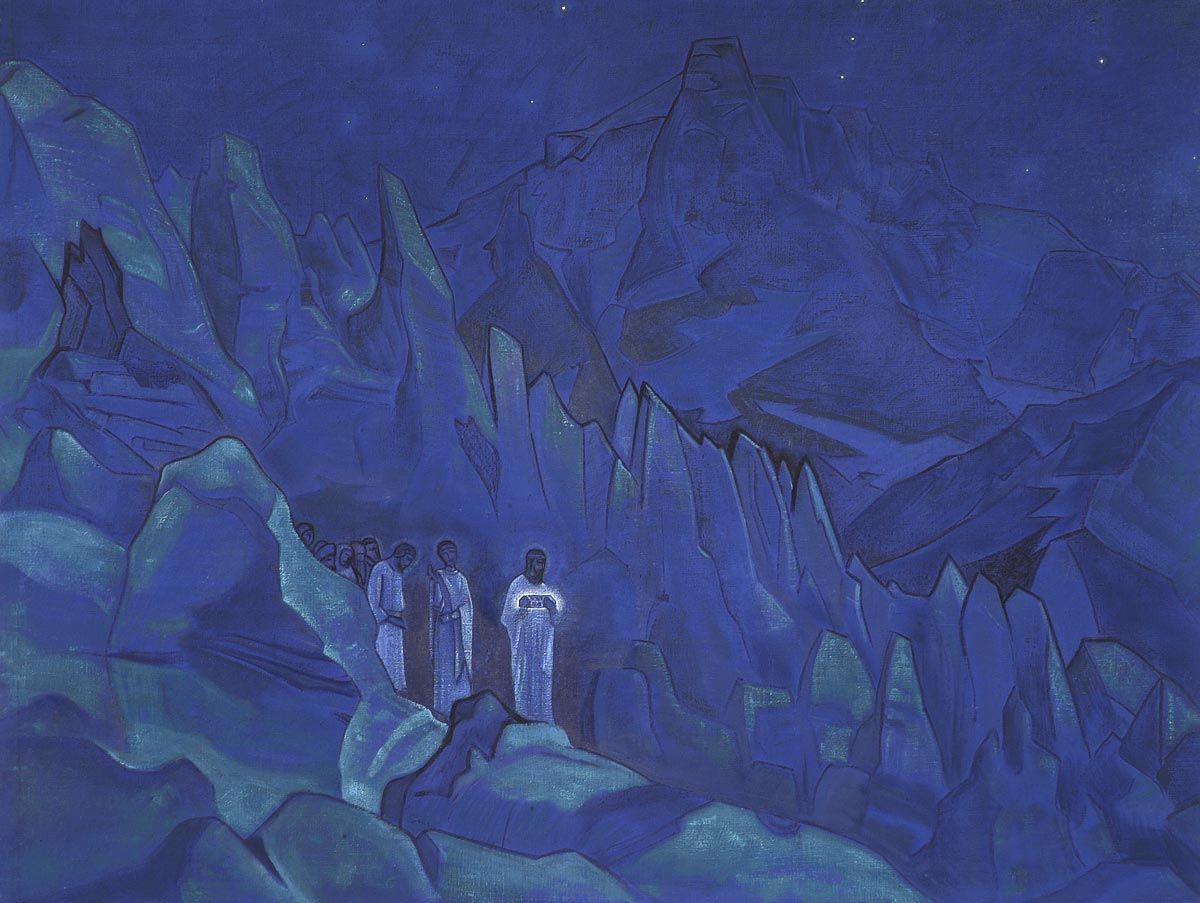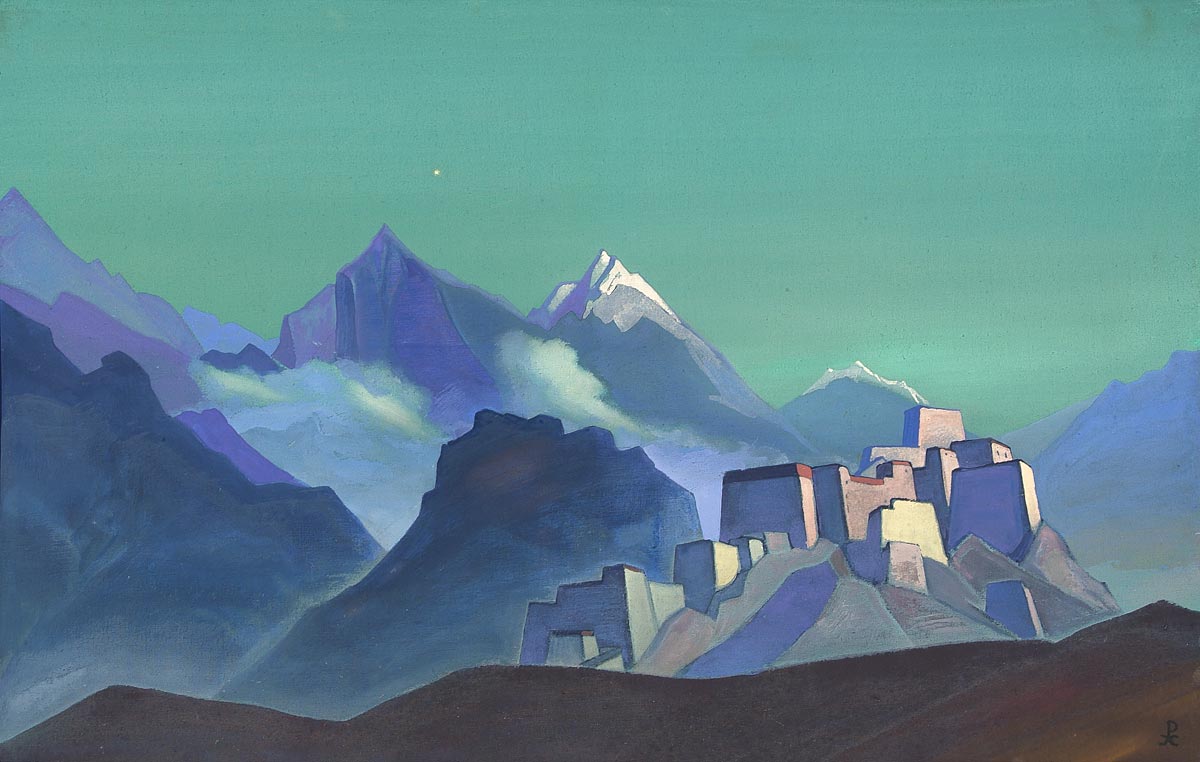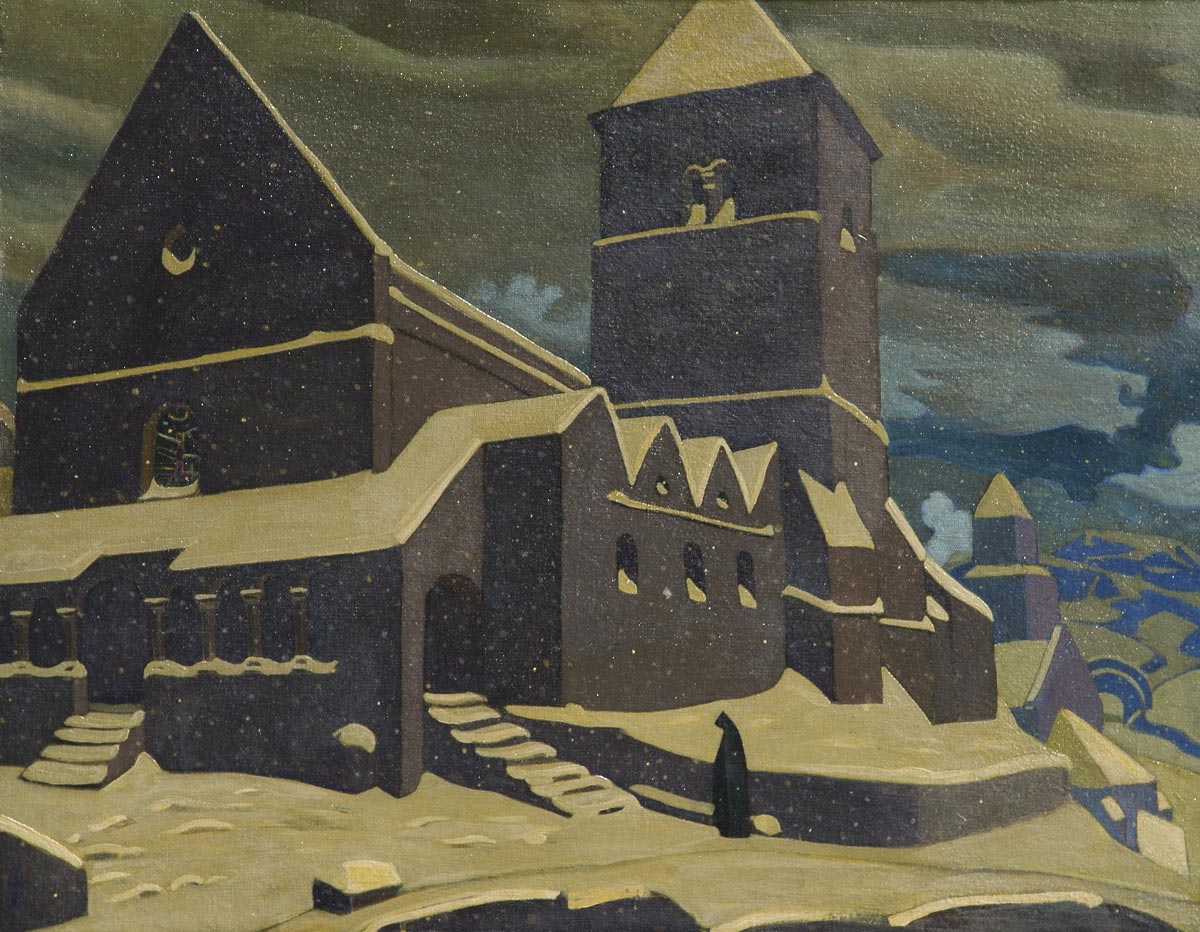Currently On Display
A selection of paintings by Nicholas Roerich on loan from the Nicholas Roerich Museum in New York.View Full Exhibition
An Introduction to Nicholas Roerich
Nicholas Roerich was born October 9th, 1874, in St. Petersburg, Russia, to middle class parents. At a young age he accompanied a particular archaeologist on his expeditions to local dig sites, which generated in Roerich a lifelong interest in archeaology and ancient history. When he turned sixteen Roerich enrolled simultaneously at the Academy of Art to pursue his own artistic interests in painting, and at St. Petersburg University to study law at the behest of his father who did not consider painting to be a worthwhile endeavor. While attending university Reorich was introduced to the prominent historian and writer Vladimir Stasov, and through him encountered many other important figures of the day. Roerich became acquainted with such men as Rimsky-Korsakov, Mussorgsky, and Stravinsky. Roerich also attended operas at the Court Conservatory where he became deeply interested in music and in the works of Wagner. In the late 1890's Russian arts experienced a golden age with the artistic minds of St. Petersburg at the helm. Artists of the avant-garde found themselves led by the artist Sergei Diaghilev, who was an upperclassman of Roerich's at the St. Petersburg University. Diaghilev was one of the first and certainly the most prominant artist to notice and appreciate Roerich's work. Diaghilev co-founded the short lived magazine "The World of Art", which valiantly fought against the schools of sentimentality and realism. This magazine was instrumental in advertising Russian artistic circles to the upper-class and the educated, and Roerich served on its editorial board.
After finishing his thesis, Roerich planned a year long trip to Europe to rub shoulders with the artists of Paris and Berlin. Before he left he was introduced to the niece of Mussorgsky and daughter of the architect Shaposhnikov, Helena. There was an immediate mutual attraction between them, and after Roerich returned from Europe they become engaged. Helena was a rennaisance woman who was as talented a pianist as she was an author and linguist. For the rest of Roerich's life Helena would be a constant source of motivation and artistic inspiration, and would be one of the driving forces in Roerich's later interest in Asian religions and spiritualism.
The couple celebrated the birth of their first son George in 1902 with a grand tour of Russia. On this journey Nicholas became increasingly saddened by the state of neglect that he found many of Russia's oldest castles, churches, and monuments to be in, and he resolved to draw attention to the issue and arrange for means to have them protected and preserved. In 1904 Nicholas began to promulgate a plan to protect architecture and heritage sites around the world, although it wasn't until thirty-one years later that this plan would come to fruition in the form of the Roerich Pact. 1904 also marked the beginning of religious themes in Nicholas' paintings. These early religious works dealt with the Russian saints and figures of legend. Roerich further amassed a great collection of stone age artifacts in this time.
In 1915 Nicholas fell ill with pneumonia and traveled to Sortaval, Finland, to recover there in the company of some extended family. It is in this time that the themes and subject matter of Nicholas' paintings become affected by the fires of war that were engulfing Europe, and the violent revolution in his own country that would prevent his return after recovering. When Nicholas recovered from his illness in 1918 the Roerich's planned to relocate to India to avoid the Bolshevik revolution in Russia. This relocation was made possible after a series of moves made by the family from Finland to Sweden, then to London, Chicago and New York, and finally on to Bombay as Nicholas followed a series of lucrative commissions and invitations from fellow artists.
The Roerich family first made landfall in Bombay in the December of 1923 and immediately began a tour of cultural centers and historic sites. Along the way they met with Indian scientists, scholars, and artists. By the end of the month the family found themselves in Sikkim on the southern slopes of the Himalayas. From there the Roerichs traveles further into Chinese Turkestan, Altai, Mongolia, and Tibet studying the languages and religions of the region along the way. At the end of their journey the Roerichs settled in the Kullu valley in 1928, 6,500 feet above sea level in the Himalayan foot hills. The following year the family traveled to New York for the opening of the Roerich Museum where Nicholas began to champion anew his cause for the global preservation of heritage sites and architecture until his success in establishing the Reorich Pact in 1935. Finally, on December 3rd, 1947, Nicholas Roerich passed away. He was cremated and his ashes buried in Kullu on a slope facing the Himalayas.



